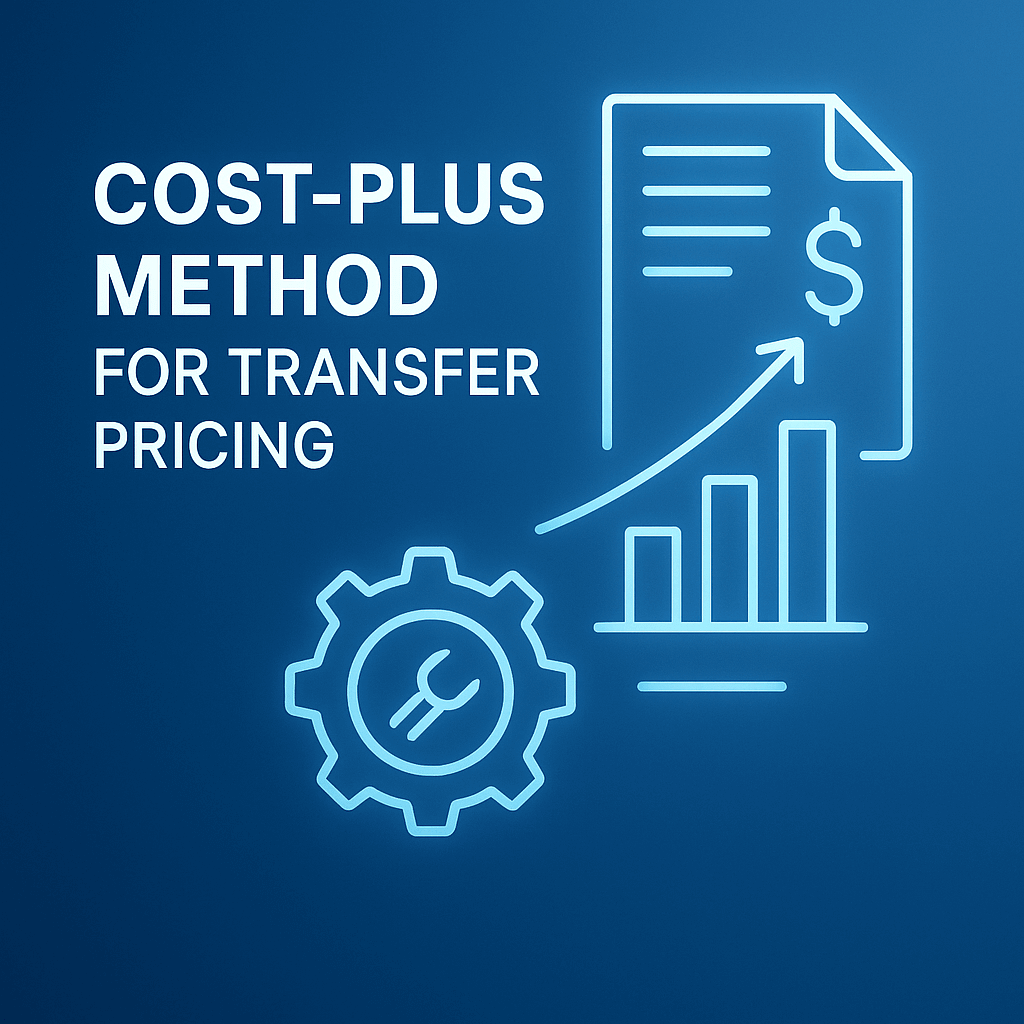When conducting a transfer pricing study, one must select the most appropriate comparison method to show that the prices set in a controlled transaction (i.e., a transaction between related parties) are at arm’s length. Within its transfer pricing guidelines, the Organization for Economic Cooperation and Development (OECD) outlines the methods that can be employed and categorizes them into two distinct groups: traditional transaction methods and the transaction profit methods. The resale price method (RPM) is categorized within the traditional transaction methods group, along with the comparable uncontrolled price method and the cost plus method.
The resale price method is a widely employed to determine an appropriate resale price for goods or services exchanged between related entities in different tax jurisdictions. Its fundamental principle is to align the resale price with the profit margin typically earned by independent resellers in comparable markets.
The resale price method calculates the appropriate resale price by subtracting the reseller’s operating expenses and desired profit, represented by a suitable gross margin (the resale price margin), from the price at which the goods or services are sold to external customers. The remaining amount, after deducting the gross margin and adjustment made for other costs related to the purchase of the goods or services, is then considered the arm’s length price for the purchase of goods or services from the related supplier.
This method proves particularly valuable in marketing operations where the reseller’s contribution to the value of goods or services is limited, and their primary function revolves around acting as a distribution channel. Industries such as retail, wholesale, and distribution commonly apply this method.
At times when there are internal comperables (i.e., similar transactions between the test party and other, unrelated parties) but the comparable uncontrolled price method can’t be applied due to differences in the products, the resale price method will be typically applied.
To facilitate the effective implementation of the resale price method, the OECD offers comprehensive guidelines and principles in its Transfer Pricing Guidelines for Multinational Enterprises and Tax Administrations. These guidelines provide detailed explanations, illustrative examples, and recommended practices, ensuring accurate and consistent utilization of the resale price method in transfer pricing analyses.
How does the resale price method work?
Initially, determine the gross margin (the resale price margin). This involves calculating the gross margin achieved by a distributor upon reselling products acquired from third-party suppliers. To perform this calculation, divide the gross profit by the net sales. This margin reflects the amount necessary for the reseller to cover its selling and operational expenses and achieve a suitable profit. Next, deduct the gross margin from the resale price. The remainder, after accounting for additional costs linked to product procurement (e.g., customs duties), can be considered an arm’s length price for the initial transfer of property between the associated enterprises.
Note that the resale price method is a one sided method, there for requires on to choose the tested party. Also note that not all transactions can be considered comparable, it is necessary to conduct a comparability analysis and examine the circumstances and the details of the transactions. For the purposes of applying the RSM method, the comparability of the preformed functions is more important than the specific product features. This is duo to the fact that the gross profit margins as usually very similar when preforming similar functions, while prices usually are similar when the products are substitutes of each other.
An easier determination of an appropriate resale price margin arises when the reseller doesn’t significantly enhance the product’s value. However, utilizing the resale price method to ascertain an arm’s length price becomes more challenging when the goods undergo further processing or incorporation into a more complex product prior to resale.
A resale price margin holds greater accuracy when realized shortly after the reseller’s purchase of the goods. The longer the time gap between the original purchase and resale, the more likely other factors such as market changes, exchange rate fluctuations, and cost variations must be factored into the comparison.
Resale Price Method example
In this article, we will look at a rather simple example of the application of the resale price method. Even though it is a simple example, it shows the usage of the resale price method quite well.
Let’s consider a multinational enterprise (MNE) with two companies. Company A operating in country X, and a its related party, Company B operating in country Y. Company A purchases electric kettles from Company B and electric toasters from company C, an unrelated party also operating in country Y. Company A doesn’t add any significant value to the products after it purchased them and selling them to its clients.
We selected Company A to be the tested party.
Because of the difference in the products, the CUP method can’t be applied. After conducting a thorough research, we came to the conclusion that those two transactions are comparable (this is not an automatic decision, but rather one the requires comprehensive research and review of all of the conditions of the two transactions).
The margin that Company A has from the sales of the electric toasters is 15%. Since both transactions are comparable, we can understand that Company A should also get a similar margin from the sales of the electric kettles.
Let assume the Company A sells the electric kettles for 200$, and there are no costs related to the purchase of the kettles (e.g., costumes) we can now calculate the arm’s length price of the transaction.
Resale price= 200$
– Resale price margin (15%)= 30$
Arm’s length transfer price= 170$
To sum up, the price that company B should charge Company A for the kettles is 170$.
Suitability in different contexts
The RPM is typically applied to tangible property transactions, such as the resale of finished goods. It is particularly useful when the underlying products being resold are not identical but share similar features. For example, if a distributor sells running shoes of different colors or designs, the gross margin percentage is expected to remain relatively consistent across those variations. Top of Form
The suitability of the resale price method is contingent upon the unique context and characteristics of the transactions under scrutiny. Various scenarios where the resale price method finds relevance include:
- Distribution and retail operations: The resale price method is frequently employed within distribution and retail industries. It proves apt when a related entity acts as a distributor or reseller of products obtained from a related supplier. This method considers the distributor’s or reseller’s gross profit margin to establish an arm’s length price.
- Routine distribution functions: When a related entity undertakes routine distribution functions such as warehousing, inventory management, marketing, and sales promotion, the resale price method is often utilized. In such instances, the method factors in the functions performed by the reseller as well as the risks assumed to ascertain an arm’s length resale price.
- Limited value-added activities: The resale price method is suitable when the related entity adds minimal value to the products or services before reselling them.
- In situations the comparable uncontrolled price method can be used, the resale price method might be a good fit.
In summary, the resale price method provides a framework for determining appropriate pricing for intercompany controlled transactions by considering the gross margin earned in comparable transactions between unrelated parties. It helps ensure that intercompany transactions are conducted at fair market prices and comply with transfer pricing regulations, promoting transparency and fairness in multinational business operations.
Advantages of the Resale Price Method
Showcasing Demand: When the connection between the costs to produce a product or a service and the price they sold at is not strong, then the RPM may be a more reliable option. This is because, the RPM method is based on the market price (i.e., the resale price), showcasing the demand.
Flexibility in Product Features: The RPM allows for minor differences in product features while maintaining relatively comparable gross margins. This makes it particularly useful when dealing with tangible products that may have variations in color, design, or other attributes. The method focuses on the overall profitability of the transaction rather than getting fixated on specific product details. Of the application of the RPM method comparability of the preformed functions is more important than that of the specific product features.
Allowing Operating Loses: The RPM focuses on the gross profit margin that is being earned. There are situations in which the distributor will have operating loss because of commercial factor (and not because of the transfer price set). While other method may not allow this to happen, the RPM won’t always result in a positive operating profit.
Disadvantages of the Resale Price Method
Limited Applicability: The RPM is primarily suitable for tangible property transactions, particularly those involving the resale of finished goods. It may not be as applicable to other types of transactions, such as the transfer of intangible assets. In such cases, alternative transfer pricing methods may be more appropriate.
Complexity and Compliance: Applying the RPM requires careful analysis, data gathering, and documentation to comply with transfer pricing regulations. It can be a complex process that demands expertise in transfer pricing and a thorough understanding of relevant regulations and guidelines. Meeting these compliance requirements can be time-consuming and resource-intensive for multinational companies.
Transaction-Specific Gross Margin: The RPM requires transaction-specific gross margin data, which means that the gross margin percentage needs to be determined based on the specific transaction being evaluated. This can be problematic if there are differences in expense categorization or accounting practices among the related parties involved. Accounting differences can affect the determination of gross margins and may introduce complexities in applying the RPM.
One – sided method: The fact that the RPM is a one-sided method has its pros and cons. The con is that there is a possibility that the result of the analysis using this method can produce an extreme outcome for the supplier, for example they might have losses while the distributor has profits.
Considerations when applying the RSM Method
- The accuracy of a resale price margin is higher when the reseller sells the goods shortly after purchasing them. As the time between the original purchase and resale increases, additional factors such as market changes, exchange rates, and costs become more relevant and need to be considered in any comparison.
- Determining an appropriate resale price margin is straightforward when the reseller’s value addition to the product is minimal. However, the application of the resale price method becomes more challenging when the goods undergo further processing or are incorporated into a more complex product, resulting in a loss or transformation of their original identity. For instance, when components are joined together to create finished or semi-finished goods, it becomes more difficult to establish an arm’s length price using the resale price method.
- When accounting practices differ between controlled and uncontrolled transactions, it becomes crucial to make necessary adjustments to ensure consistency in calculating the resale price margin. These adjustments are particularly important when there are variations in how certain costs, like research and development (R&D) expenses, are classified, either as operating expenses or costs of sales. Failing to make appropriate adjustments would result in incomparable gross margins, underscoring the significance of harmonizing the data to accurately evaluate the resale price margin.
Our firm specializes in international taxation and provides our clients with a comprehensive assistance for their transfer pricing needs. To schedule a consolation call with our team, click here.









